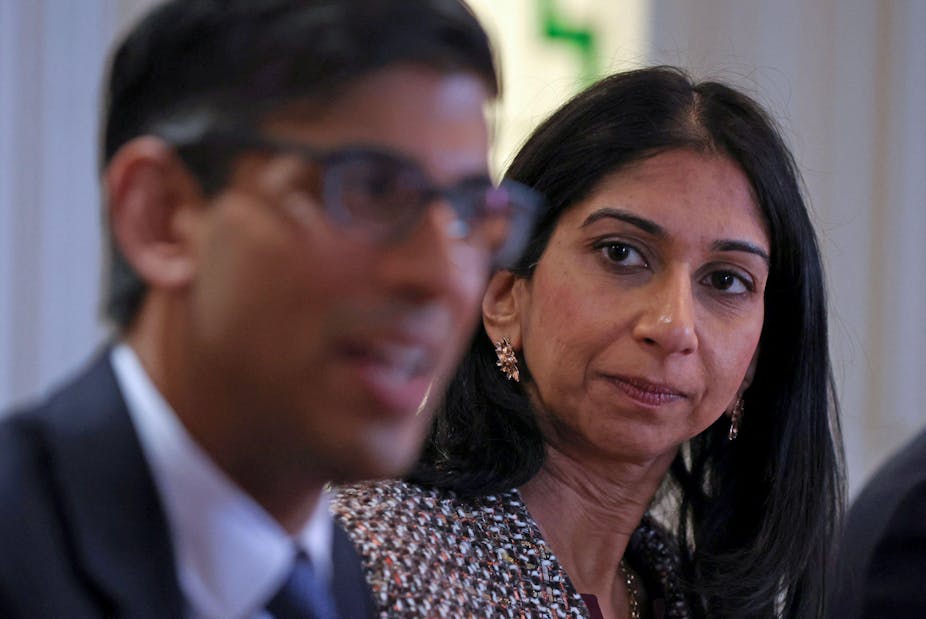We’ve had many indications over the past few years, but recent events are perhaps the most significant yet of the difficult electoral coalition the Conservatives are trying to bridge as they fight to hold onto power.
The prime minister, Rishi Sunak, has opted to end the tenure of Suella Braverman as home secretary, a politician who has made a career out of seeking to appeal to the cultural right wing of the electorate and the party.
At the same time, Sunak has appointed former prime minister David Cameron as foreign secretary. This is likely in an attempt to appeal to the traditional, more culturally liberal centre right of the party.
Removing Braverman is, by itself, unlikely to move the needle on Conservative support among the public in either direction. Snap polling shows that most people (57% to 20%) think sacking her was the right thing to do. This is true even among Conservative voters, though to a lesser extent (44% to 39%).
Polling from before she was sacked suggests that this is a consistent pattern – although people who voted Conservative in 2019 thought she should stay. The intervening days of protests in London do not seem to have bolstered her support.
Some of the positions Braverman seemed to think spoke to the nation are also actually very unpopular. Neither Conservative nor Leave voters agree that homeless people living in tents are making a “lifestyle choice”, for example.
And, even if they are aligned with her on such views, we already know, that ordinary voters have more important things on their minds, such as the cost of living, the NHS and climate change. In terms of electoral salience, these drown out the cultural issues which Braverman has made the focus of her tenure at the Home Office.
That is not to say, however, that her position on the pro-Palestine protests wasn’t popular. Indeed, polling suggests most (by 50% to 34%) felt the protests over remembrance weekend should be banned. That’s especially true for people who voted Conservative in 2019 (80% to 12%).
Outside the tent
The danger for Sunak in releasing Braverman of her duties is less among the public and more within his own party. The public might agree with Braverman’s position on protests specifically, but are less likely to support her attacks on the police.
Braverman is, however, far more popular than Sunak among the latter group. And while it’s unlikely Braverman has enough backbenchers to seriously endanger Sunak, they are loud. We can expect them to make their positions heard and the one thing the public does not warm to is a divided party.
And what about David Cameron? In 2018, when YouGov polled whether people would support Cameron returning, more than 50% were opposed, including 39% who strongly opposed (and 32% who were strongly opposed among Conservative voters).

Snap polling now suggests little has changed: 38% of the public think the decision was a bad one (with 24% on board and 38% saying “don’t know”). That includes 35% of Conservative voters (though 36% say the decision to bring Cameron back was a good one).
So, when the dust settles, all this may shift the electoral geography slightly, increasing support in the traditional Conservative heartlands (the “blue wall”). But the Conservatives’ travails are long in the making and are structural.
Without a clear plan – and upturn in fortunes – on the cost of living and healthcare, it is possible that this is another chapter in the Conservatives’ Westminster drama that fails to resonate with the public. Instead, Sunak’s concern will be less with the public and more with his own party – those on the backbenches and in Conservative meeting rooms across the country.

